Legio VIIII Hispana
Legio VIIII Hispana: one of the Roman legions. Its name means "the Spanish Legion".
Caesar
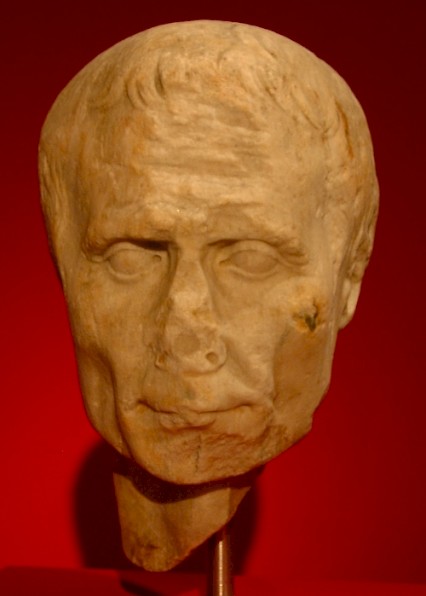
With the Seventh, Eighth and Tenth legions, the Ninth was among the oldest units in the imperial Roman army. They were with Julius Caesar when he invaded Gaul in 58 BCE. The Roman commander mentions the Ninth Legion in his accounts of the battle against the Nervians.
During the civil war against Caesar's fellow-triumvir and rival Pompey, it fought in Hispania in the battle of Ilerda (Summer 49); later, the soldiers were transferred to Placentia in northern Italy, where they briefly revolted. In the spring of 48, the Ninth served at Dyrrhachium, where it suffered heavily. In the battle of Pharsalus (9 August 48), it fought as one unit with the Eighth. After this battle, the soldiers were sent back to Italy to be pensioned off, but in 46, they participated in Caesar's African campaign. Some veterans were settled in Picenum, others at Histria.
Augustus
However, they were reenlisted in 41 by Caesar's heir Octavian, who needed them to put an end to Sextus Pompeius' occupation of Sicily, which put the grain supply of Rome into peril. When this was achieved, the Ninth was sent to the Balkans, where it received the surname Macedonica. (An inscription referring to a Ninth Legion surnamed Triumphalis may prove that the legion was refounded earlier and also fought in the battle of Philippi in 42.)
In 31, war broke out between Octavian and Mark Antony, culminating in the battle of Actium, where Octavian became sole ruler of the Mediterranean empire. He was called Augustus and was Rome's first emperor. The Ninth Legion, which had been present at Actium, was sent to Hispania Tarraconensis, where it took part in Augustus' campaigns against the Cantabrians, which lasted from 25-13 BCE. This was a very large war: among the other troops involved were I Germanica, II Augusta, IIII Macedonica, V Alaudae, VI Victrix, X Gemina, XX Valeria Victrix, and another legion, perhaps VIII Augusta. The Ninth seems to have distinguished itself especially during the campaign of 24, and may well have received its honorific title Hispana or Hispaniensis in that year.
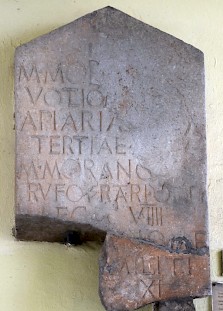
It is possible that subunits were transferred to the Rhine in 20 BCE and were active during Marcus Vipsanius Agrippa's invasion of Germania in the following year, but there are many uncertainties. If the Ninth was transferred to the Rhine, it may also have played a role during Drusus' campaigns on the east bank of the Rhine. However, an inscription mentions a soldier of VIII Hispana in Pannonia during the reign of Augustus,note and it is possible that the legion was in fact not stationed on the Rhine, but on the Danube; Sirmium is a possibility.
Danube
What is certain, however, is that in the confused months after the Roman defeat in the Teutoburg Forest (September 9 CE), the legion was in Pannonia, where it is firmly attested in 14, the year of the death of Augustus. Here, in the city of Siscia (modern Sisak) on the confluence of the rivers Colapis (Kupa) and Savus (Sava), it stayed until 43. The only known exception is that (subunits of) VIIII Hispana were sent to Africa and Mauretania to support III Augusta in its struggle against the tribal warriors of Tacfarinas (21-24). The legion was commanded by one Publius Cornelius Scipio, who received a monument along the Cardo of Lepcis Magna.
Britain
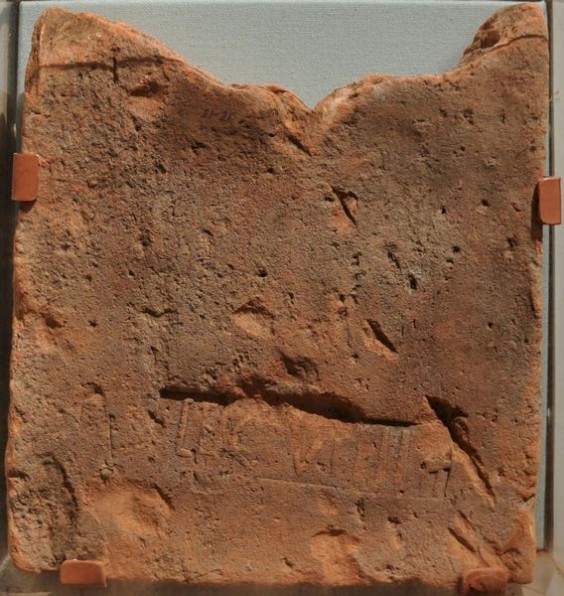
In 43, the emperor Claudius invaded Britain with II Augusta, VIIII Hispana, XIV Gemina and XX Valeria Victrix. The Ninth, commanded by Aulus Plautius, was first stationed in two camps at Longthorpe and Newton-on-Trent. It may have shared a base with XIV Gemina in Leicester too, but this is not certain. Anyhow, it was in Lincoln after 55.
According to our sources, it suffered very heavy losses (about a third of its strength) during the revolt of queen Boudicca (60). However, its commander, Quintus Petillius Cerialis, could continue his career, which suggests that he and his men had behaved honorably. Reinforcements were shipped in from the German provinces. After 71, we are not sure about its whereabouts, but in 77, it was transferred to York, where it had to guard the northern frontier of Roman Britain and replaced II Adiutrix.
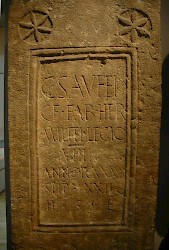
Cerialis, who had returned to Britain after an important campaign in the Rhineland in 70 (against the rebellious Batavians), took personal command of VIIII Hispana, and in 78 directed it against the warriors of the leader of the Brigantes in northern England, Venutius. At the same time, Gnaeus Julius Agricola led XX Valeria Victrix to the north. Together, they crushed Venutius near Stanwick.
In 83, a subunit of VIIII Hispana fought against the Chatti, a Germanic tribe near Mainz in Germania Superior. Perhaps as many as 1,000 men were away from Britain, which seems to have caused some difficulties during Agricola's war. It is possible, perhaps likely, that a subunit took part in Trajan's invasion of Dacia, but this is - again - not proven.
The last recorded, datable activity of this legion in Britain was in 108/109, when it built a stone fortress at York. What happened next, is unclear. Several scholars have argued that it was defeated and annihilated by the Picts, maybe in 117/118, and that this caused the emperor Hadrian to build the famous wall in northern England.note
Nijmegen
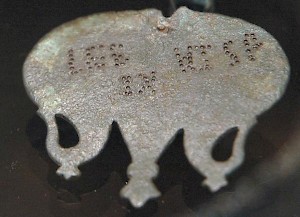
However, more recent research has shown that (a subunit of) the Ninth Legion was for a brief period after 121 at Nijmegen in Germania Inferior. (At the same time, VI Victrix moved from Germania Inferior to Britain. Did they trade places?) The fact that we know the names of several high officers of the Ninth who cannot have served earlier than 122 (e.g., Lucius Aemilius Karus, governor of Arabia in 142/143), is another indication that the legion was not destroyed in Scotland but transferred. This proves that it was still in existence during the reign of Hadrian.
Disappearance
After this, the legion disappears from our sources. It may have been destroyed during the Jewish revolt of Simon ben Kosiba (132-136), in Cappadocia in 161, or during a revolt on the Danube in 162. There is an inscription from the reign of Marcus Aurelius (161-180) that sums up all legions,note and VIIII Hispana is missing; this means that it was destroyed before or during his reign.
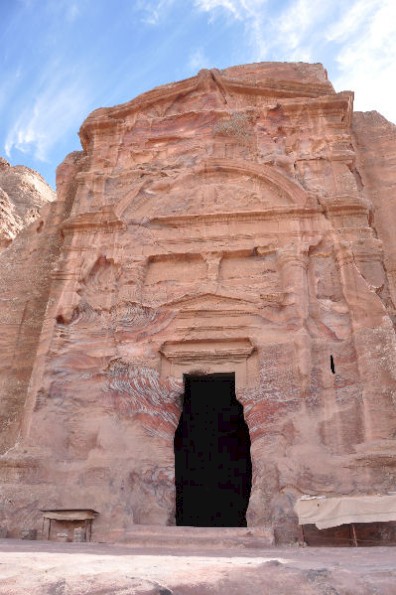
The emblem of the first legion is not known, but since it was a Caesarian unit, the badge may have been a bull.
Literature
- E.B. Birley, "The fate of the ninth legion", in: R.M. Butler (ed.), Soldier and Civilian in Roman Yorkshire (1971) 71-80
- Duncan Campbell, The Fate of the Ninth. The Curious Disappearance of a Roman Legion (2018)
- J.K. Haalebos, "Römische Truppen in Nijmegen", in: Yann Le Bohec, Les légions de Rome sous le Haut-Empire (2000 Lyon) 465-489
- M. Hassall, "Pre-Hadrianic Legionary Dispositions in Britain", in: Richard J Brewer (ed.), Roman Fortresses and their Legions. Papers in honour of George C Boon (2000)
- M. Hassall, "Legionary fortresses in Britain", in: Yann Le Bohec, Les légions de Rome sous le Haut-Empire (2000 Lyon) 441-457
- L. Keppie, "The fate of the ninth legion. A problem for the eastern provinces?" in: D.H. French & C.S. Lightfoot (eds.), The eastern frontier of the Roman Empire (1989) 247-255
- L. Keppie, "Legiones Britanniae. Legiones II Augusta, VI Victrix, IX Hispana, XX Valeria Victrix", in: Yann Le Bohec, Les légions de Rome sous le Haut-Empire (2000 Lyon) 25-37
- P.J. Sijpestijn, "Die legio nona Hispana in Nimwegen", in Zeitschrift für Papyrologie und Epigraphik 111 (1996) 281-282
- Article by Emil Ritterling.